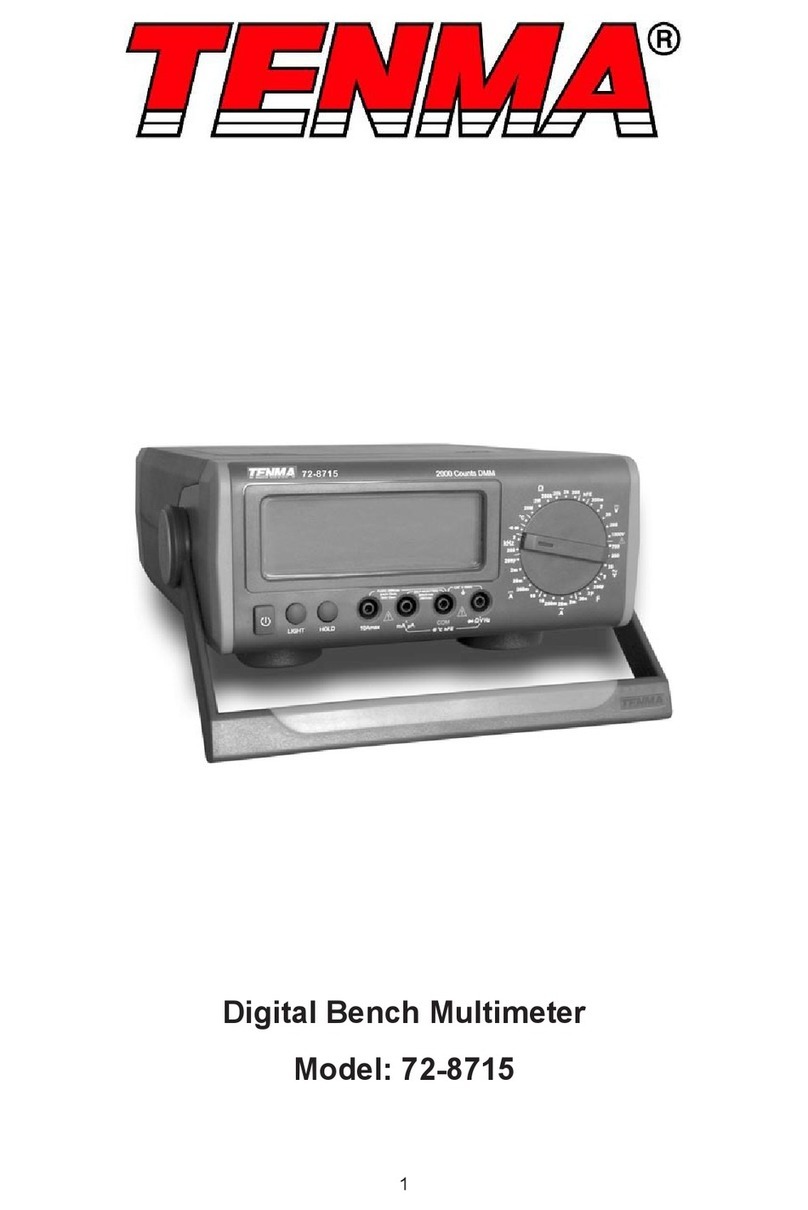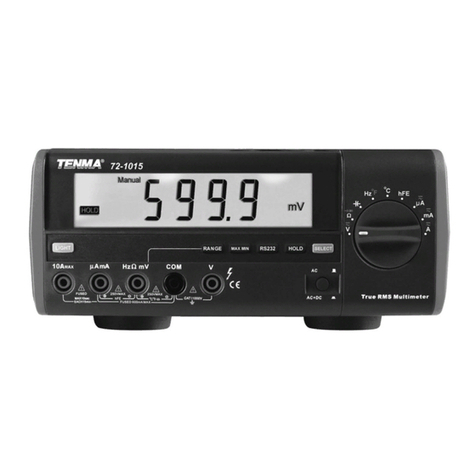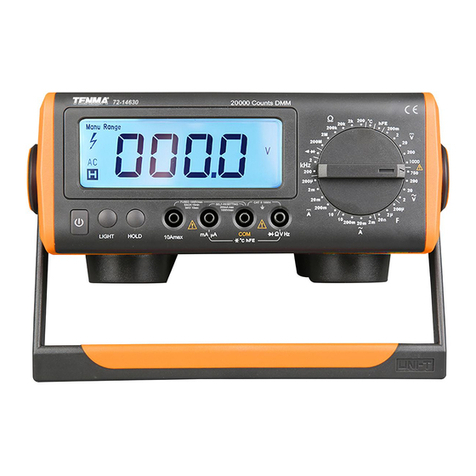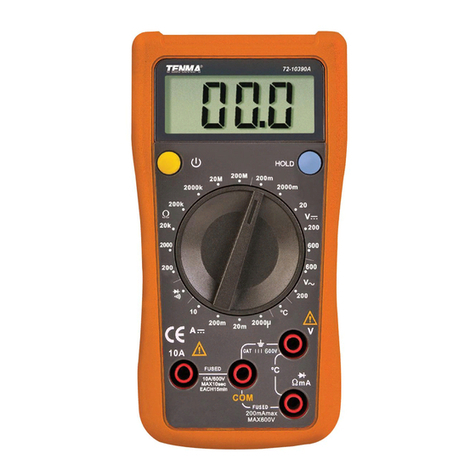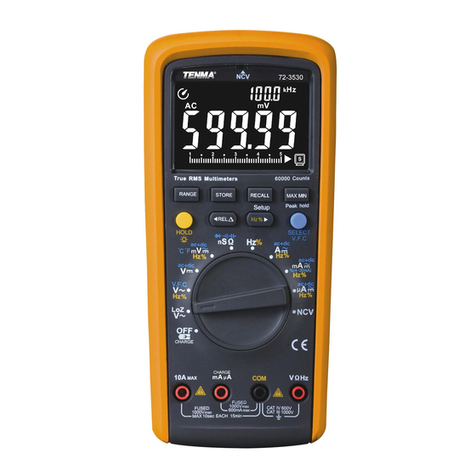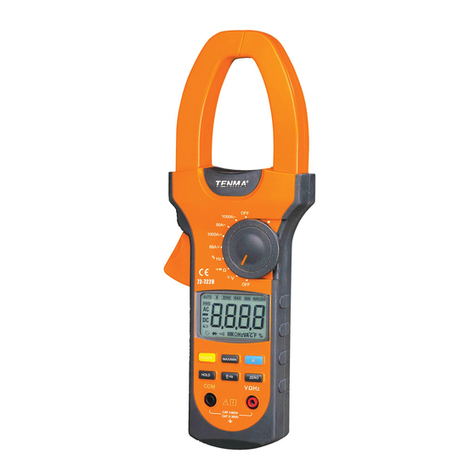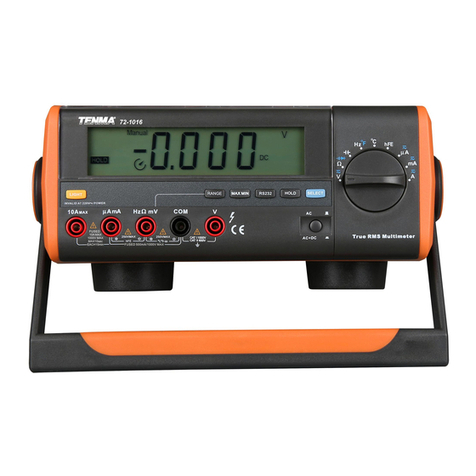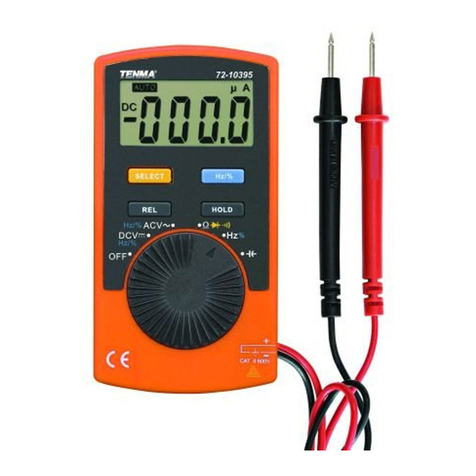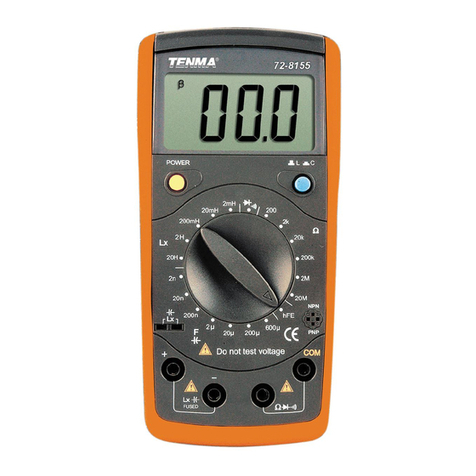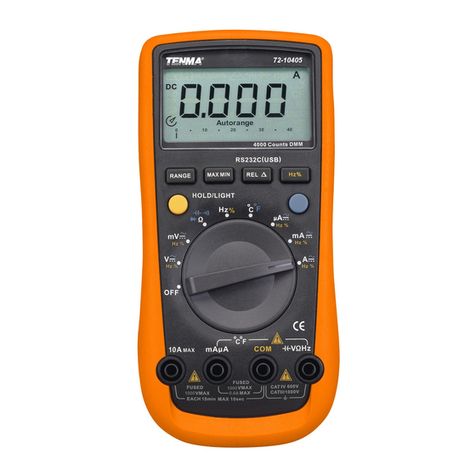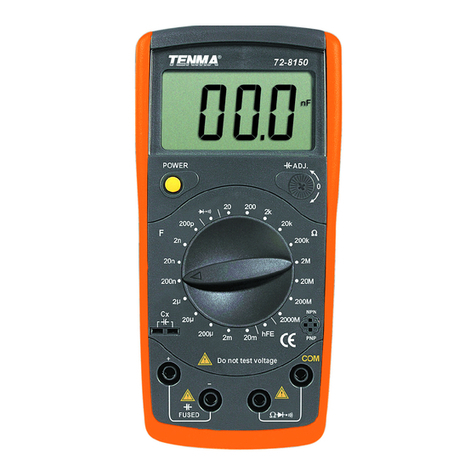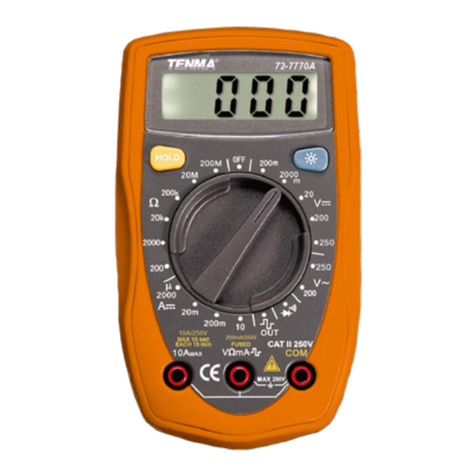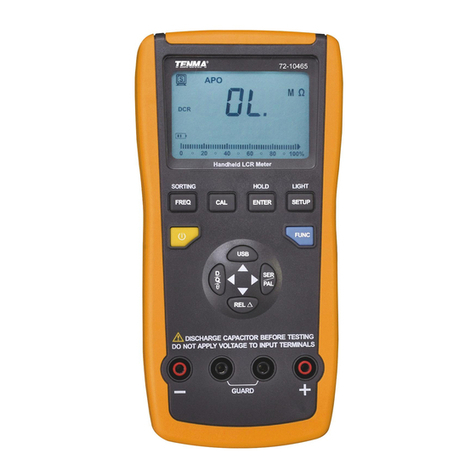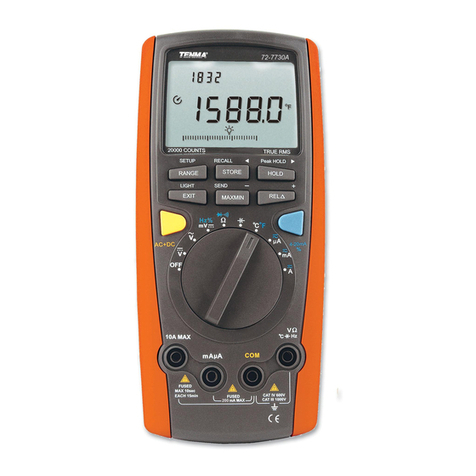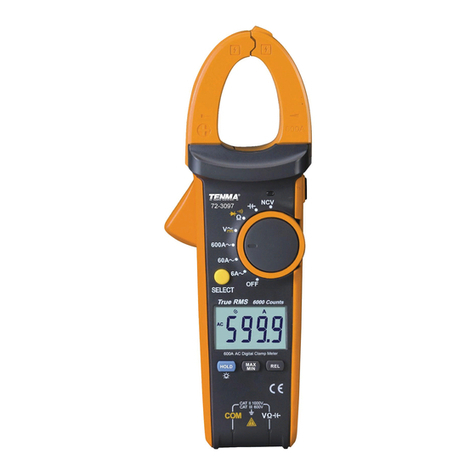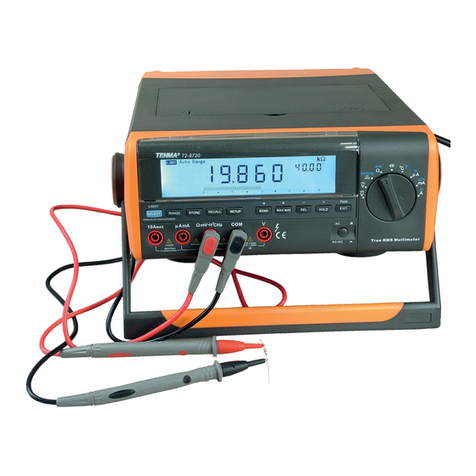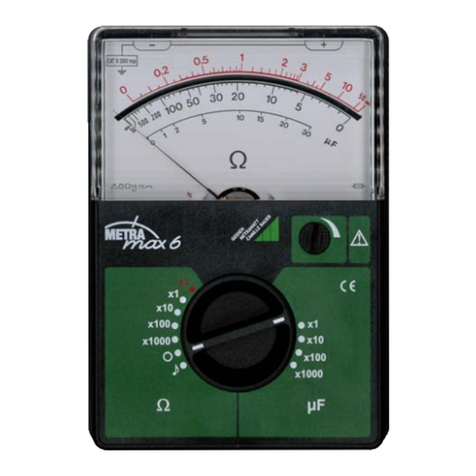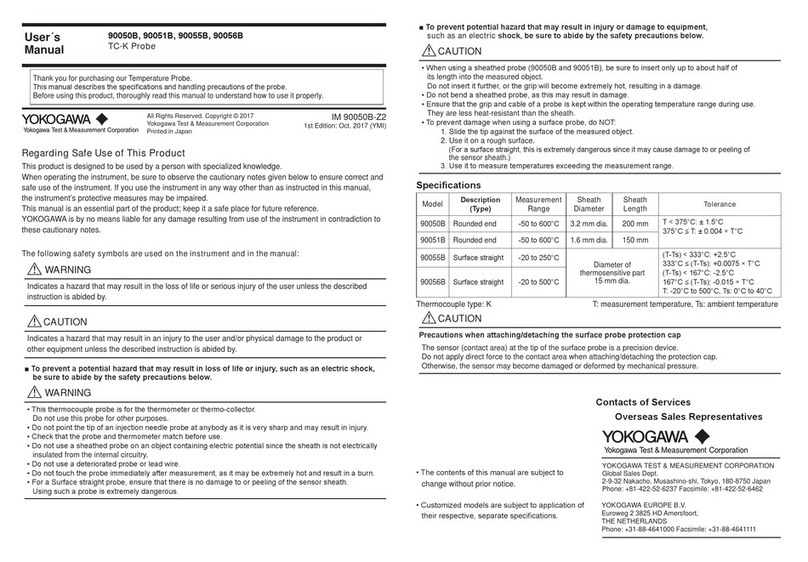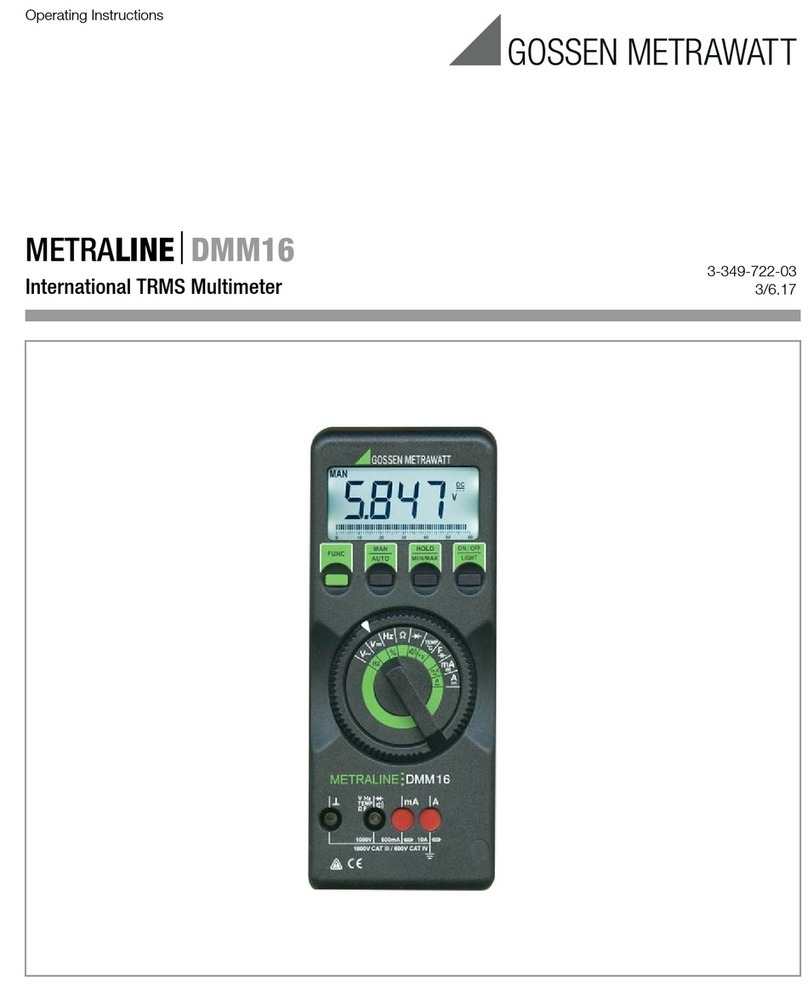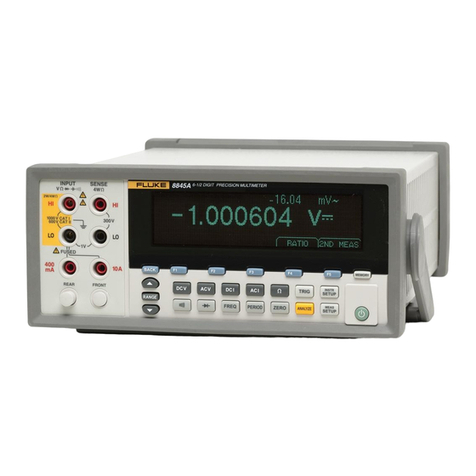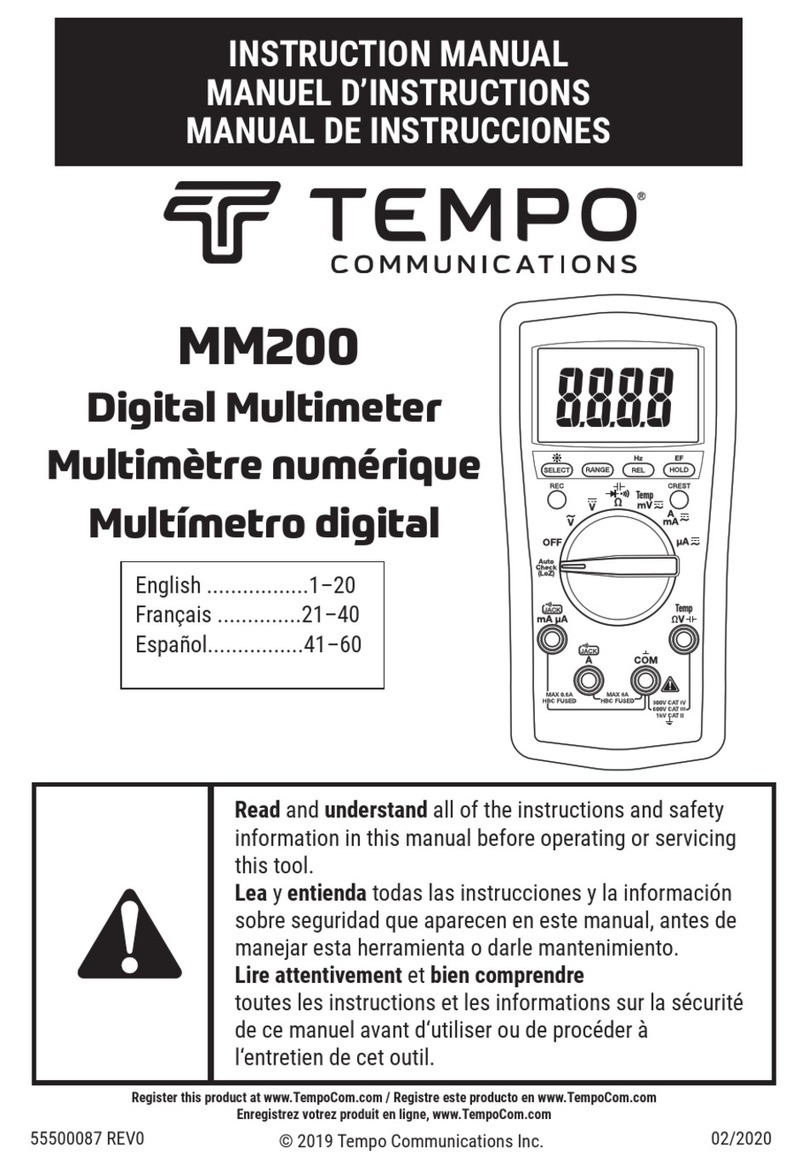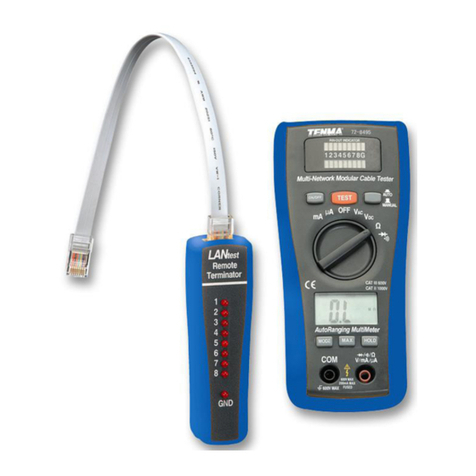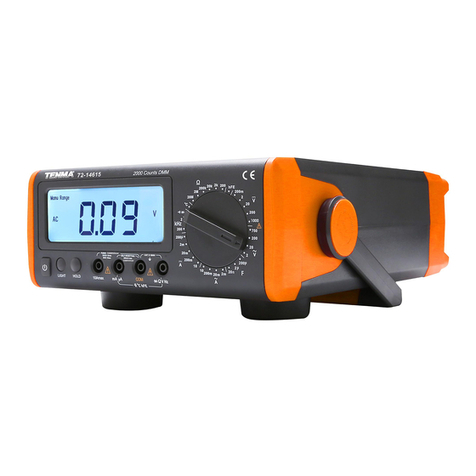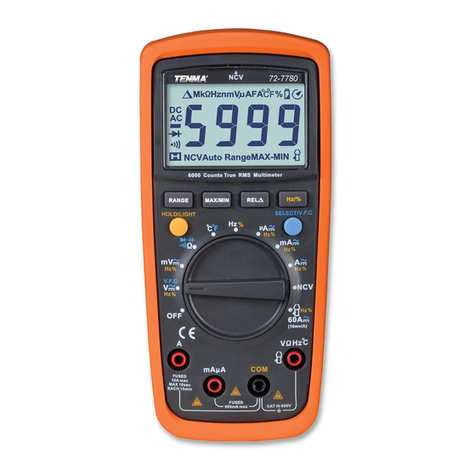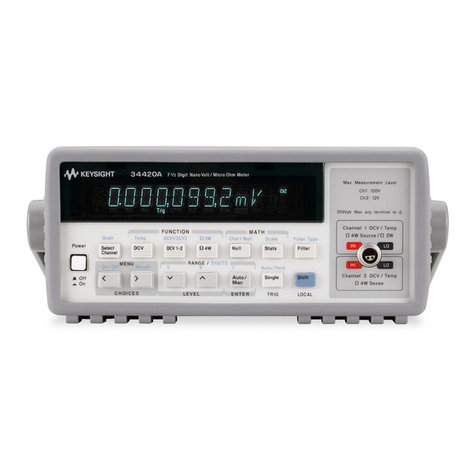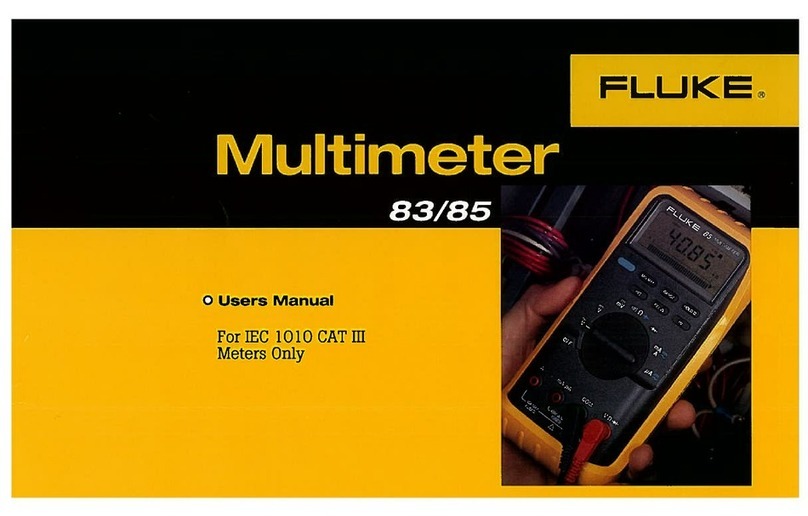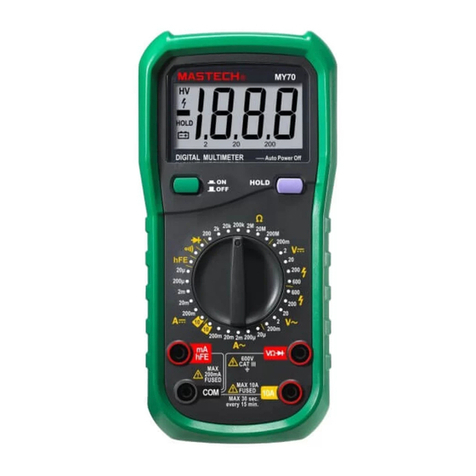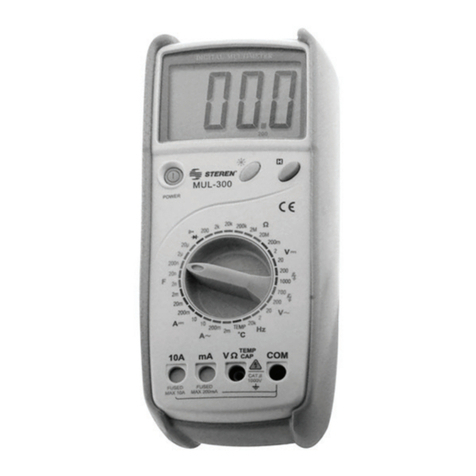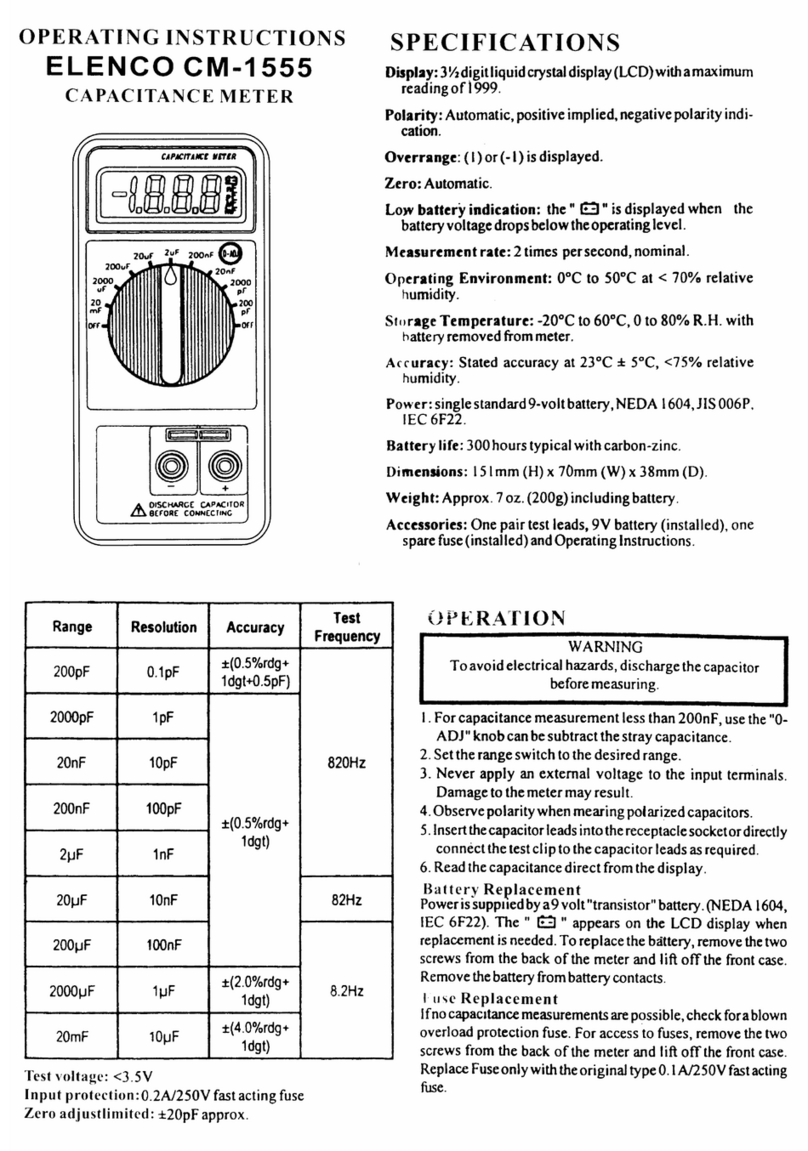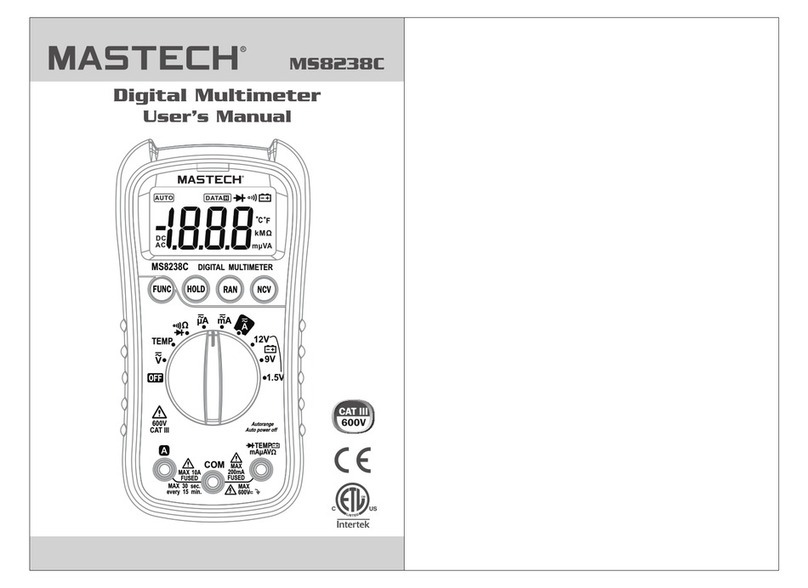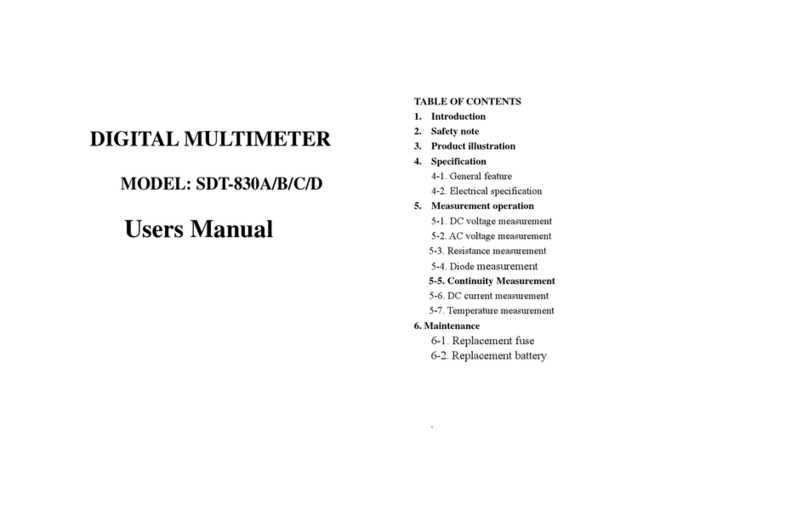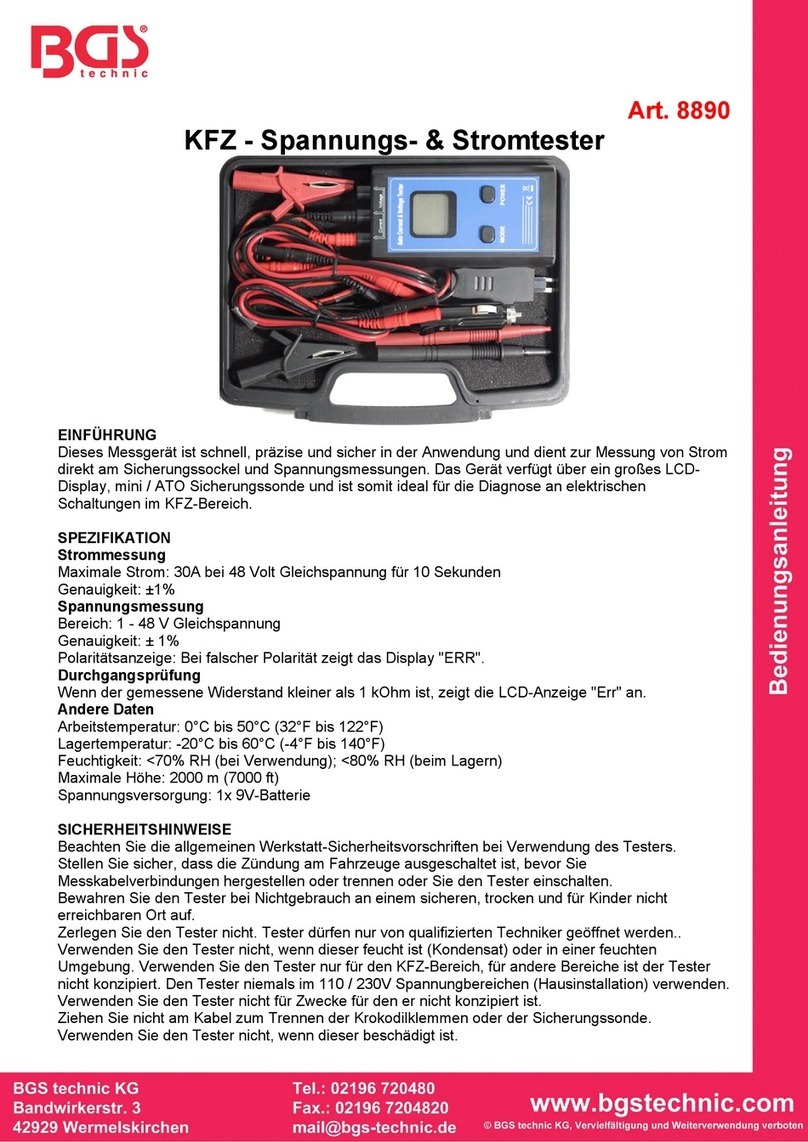7
Measuring DC Current
• Insert the black test lead into COM terminal. If the current under test is ≤ 200mA,
insert the red test lead into the mA terminal. If the current is higher, insert the red
test lead into 10A terminal.
• Turn the range selector to range, and connect the test probes in series with
the circuit to be measured. The polarity of the point touched by the red test probe
together with the measured value is displayed.
Measuring AC Current
• Insert the black test lead into COM terminal. If the current under test ≤ 200mA,
insert the red test lead into mA terminal. If the current is higher, insert the red test
lead into 10A terminal.
• Turn the range selector to a
~
range, and connect the test probes with the circuit
being measured in series.
Notes:
• If the current to be measured is unknown, choose the maximum measuring range
(10A) and reduce it step by step until a satisfactory reading is obtained.
• Disconnect from the circuit under test when changing the range.
• If the display only shows “OL”, it indicates the measured current is out of range. In
this case, turn the range selector to a higher range.
• “ ” on the meter indicates that the maximum input current is 200mA. The built-in
fuse of 500mA/600V Φ6 x 32mm can effectively protect the circuit from burn-out.
The 10A range uses a fuse of 10A/600V Φ6 x32mm for protection.
Measuring Resistance
• Insert the test leads into the input terminals (red to Ω and black to COM).
• Turn the range selector to a Ω range, and connect the test probes to the resistor
being measured.
Notes
• If the measured resistance is out of the range selected, “OL” will be displayed and
you should select a higher range. It normally takes several seconds to display a
stable reading in a high-resistance (>1MΩ) measurement.
• When there is no input, such as in open-circuit condition, the instrument will
display “OL”.
• When making an in circuit measurement, disconnect all power supplies and
discharge all the capacitors.
• In 200MΩ range, a 10-digit reading is produced on a short circuit. It should be
subtracted from the measured value. For instance, when you measure 100MΩ, the
meter will display 101.0, subtract 10 digits from 101.0 to get the precise reading.
•
Measuring Capacitance
• Before connecting to the capacitor to be tested, note that the zeroing after range
change takes some time and the existing drift reading cannot inuence the testing
precision.
• Insert the test leads into the centre pair of terminals marked .
• Turn the range selector to Fcx range, and connect the test probes to the capacitor
under test.
• The capacitance is displayed.
